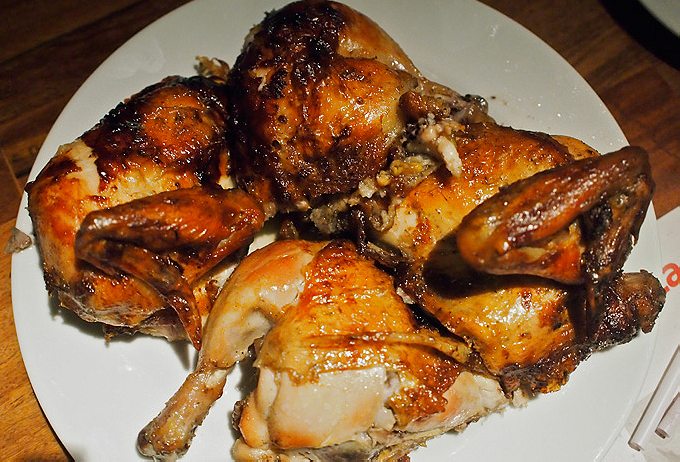All birds are not created equal, a lesson best learned from the rotisserie masters of Peru
What is the world’s most popular food? I’ve given this question an embarrassing amount of thought over the years, as I’ve downed avocado-enriched hot dogs in Patagonia, eaten crisp-edged griddle burgers on a Thai island, and devoured cracker-thin slices of chorizo pizza in a Guatemalan village (all, admittedly, acts of a desperate American many months removed from the culinary comforts of his homeland). After a decade of reflection, the answer is suddenly very clear to me: roast chicken.
Roast chicken is everywhere, of course, but ubiquity is only half the game. Unlike pizza and burgers, which may take on the idiosyncrasies of their adopted creators but for the most part remain Italian and American, respectively, in identity, roast chicken is truly a global citizen, one of the few foods we have that packs no passport, requires no Visa, and has no multibillion-dollar chain to propagate its virtues. The roast chicken is so beloved precisely because it belongs to no one.
Every culture has their version: Indians smother their chickens in yogurt, ginger and a battery of spices and roast them over the incendiary embers of a tandoori oven; cooks in Provence rub birds with thyme and lavender and slow roast them over potatoes, which crisp up in the rain of rendered fat; in Laos, you’ll find chile-lashed chicken parts at night markets screaming out for a cup of fish sauce and a cold Beer Laos chaser.
If an overarching recipe is elusive, so too is purveyor and price. You can pay $2 for a lukewarm street-corner leg roasted hours ago, $6 for a supermarket bird in a foil tray that you (should) greedily devour on the car ride home, or $60 for a free-range / all-natural / antibiotic-free / beyond-organic chicken, massaged before cooking, carved at your table by a server with two graduate degrees and a fledgling acting career. Each has its appeal.
And yet, not all birds are created equal. Not even close. While the French and the Chinese can coerce a crispiness from a chicken skin that would make Frito-Lay envious, and the Indians can do earth-moving things with a spice rack, bird for bird, the Peruvians are the most gifted chicken roasters of all, uniquely bred to fuse fire, fat, and spice in ways that the rest of the world would be wise to learn from. It’s a reality I’ve come to terms with over years of pit stops in Arlington, VA, where a swath of Peruvian expats have turned this DC satellite into the densest concentration of chicken deliciousness in the United States. I once drove two hours out of my way, under the influence of a crippling hangover, just to snag a whole chicken at the greatest of these chicken outposts, El Pollo Rico.

So when I arrived in Peru, it was with visions of pollo a la brasa rotisserieing steadily in my mind. We talked to everyone—chefs, cab drivers, pisco bums—about where to find Peru’s finest chicken, and the response, without fail, was Pardos, a mini-chain peppered across the country (and, for a brief time, in New York’s West Village). That’s where the bird pictured is from, and indeed, it was a damn fine roast chicken: marinated in dark beer and cumin, spit-roasted over a modest bed of charcoal, and served with a bathtub of chile-spiked mayo for dipping. The skin isn’t crispy; it’s not meant to be. For that, you’d need a bird free from heavy marinating cooked under a more intense, consistent heat. But the fat is beautifully rendered nevertheless, a painstaking process that bastes the meat below into juicy, tender submission.
It’s not the best roast chicken on the planet, not by a long shot, but it’s a convincing reminder of why a flame-licked bird can crush a burger any day in a popularity contest.